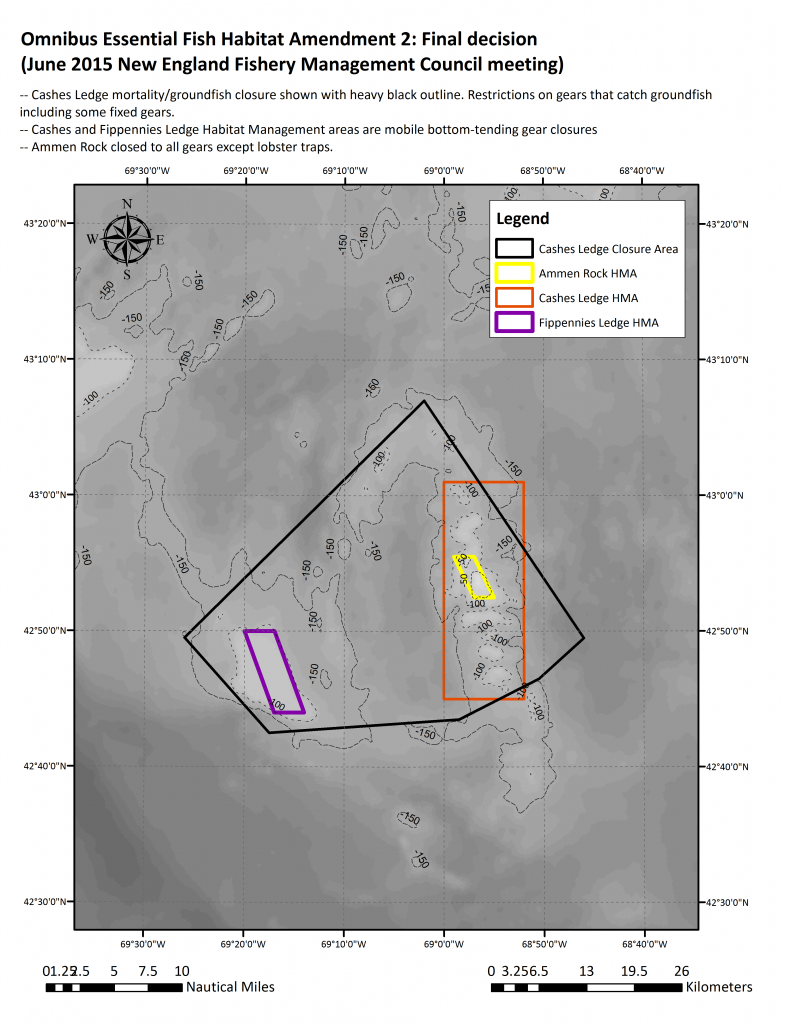WASHINGTON (Saving Seafood) — September 1, 2015 — An analysis released today by Saving Seafood examines a proposal from several environmental organizations to extend “permanent” protections to the Cashes Ledge region of the Gulf of Maine and the New England Canyons and Seamounts, by asking President Obama to declare the area a National Monument. The analysis notes that these efforts are largely duplicative of area closures already in place in this region, none of which are poised for opening. Saving Seafood further concludes that such a unilateral move would undermine the democratic and collaborative processes that to date have been highly effective in preserving and protecting the area.
Read the analysis from Saving Seafood here
The Conservation Law Foundation (CLF) and partners including the National Geographic Society, Pew Charitable Trusts and the Natural Resources Defense Council intend to ask that these areas be declared the eastern seaboard’s first Marine National Monument, according to emails sent by CLF to State House News Service. A sold out event scheduled for Wednesday, September 2 at the New England Aquarium, featuring National Geographic and the CLF, is expected to discuss this proposal. Last Friday, Maine Governor Paul LePage wrote to President Obama opposing the designation of areas within the Gulf of Maine as a national maritime monument, as reported by the Portland Press Herald.
Such a designation would be both duplicative of, and possibly damaging to, the current management of Cashes Ledge, according to the Saving Seafood analysis. Closures already in place, developed through an open, democratic and collaborative process under the Magnuson-Stevens Act, already prohibit fishing of federally managed species in the area. These prohibitions have been in place for over a decade, the analysis notes, and have been extended into the foreseeable future with the recent passage of Omnibus Habitat Amendment 2. The Council is actively working on extending similar protections to the New England Canyons through the Deep-Sea Coral Amendment.
A petition being circulated by CLF and promoted by National Geographic notes that a “trawl could strip clear the kelp forest on Ammen Rock,” but as noted in the Saving Seafood analysis, current protections for these areas – including regulations passed as recently as June of this year – already protect areas such as Ammen Rock and the kelp forests. Saving Seafood notes that none of these areas are being considered for opening to fishing.
The Saving Seafood report also cautions against proposals to create “permanent” protections for these areas that would circumvent the process already in place to manage New England’s marine habitats. It notes that the New England Fishery Management Council has responsibility for managing Cashes Ledge and other habitat areas. Through a deliberative, consultative effort involving input from scientists, public officials, regulators, and other stakeholders, the Council has consistently protected the unique habitats on both Cashes Ledge and other areas in the Gulf of Maine and Georges Bank.
According to the analysis, efforts to circumvent these procedures in pursuit of ostensibly “permanent” protections, such as a National Monument designation via the Antiquities Act, would undermine the open and democratic management process that has already resulted in the long-term protection of Cashes Ledge. Upending the regulatory process that has worked so well for so long is likely to do more harm than good, the report concludes.
Read the analysis from Saving Seafood here

